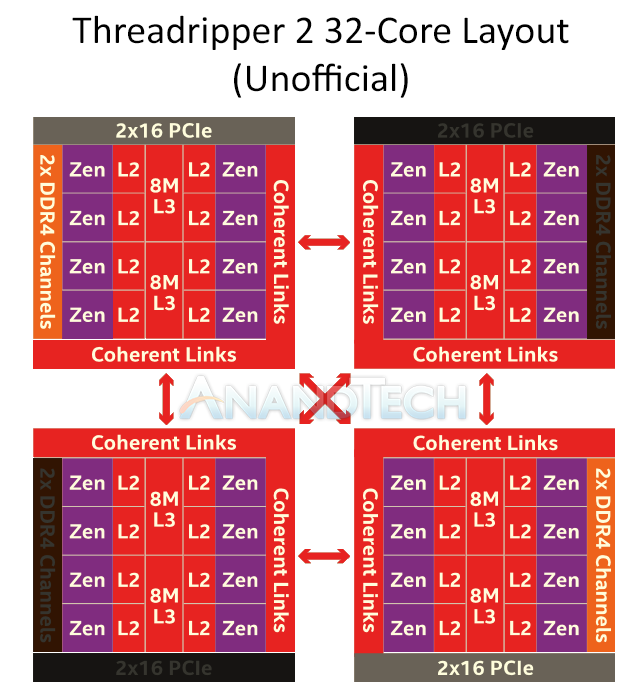ub4ty
Senior member
- Jun 21, 2017
- 749
- 898
- 96
I'd love to get my hands on such a demo. Can you give details on it? What language/dependencies? Are you likely to share the source? As for the 32 core clock and boost.. I think you need to remind yourself that this is 32 cores... My current 1950x runs at 250W TDP when maxed out with just a mild OC above stock speeds. You're spreading this (even w/ power reductions of 12nm) across double the amount of cores. It's a slightly cut down 32 core epyc :As of right now, the 32 core Threadripper is clocked at 3.0 base and 3.4 boost. It looks like the 32 core version is finalized, but the 24 core version is not. This doesn't make sense given the improved PB2 + XFR changes. The boost should be up in the 4.2-4.3 ghz range. AMD really needs to work on their boosting algorithm. They would be doing a service to us all if they used a combination of a microcode update and a bios update to an enhanced PB + XFR offering. I've long suspected that the 'clock table' of the original Ryzen series was stored either in microcode or in the BIOS itself. The correct approach to this situation would be to monitor TDP via the active sensors and send clock up to the max boost clock as needed based on core usage and TDP. Doing so would enhance performance for older parts. This would require some work, both by AMD and by board manufacturers, but would create a ton of good will for AMD customers. It would also hurt Intel similarly, as in the past Intel has known to pull anti-consumer actions (such as attempting to charge for extra features, etc.).
Regardless, if they can get the max boost up to 2700X levels, I would consider buying the 32 core chip. As it stands, my overclocked 16 core Threadripper performs significantly better in games than the 1800X did, and pretty much ties up with a non overclocked 2700X, in some cases exceeding performance in places where cores/threads matter.
Finally, I've written a voxel tech demo that I may turn into a benchmark. It generates a world of X size and utilizes all cores. It also utilizes all cores when discarding/rendering chunks as the user moves around the world. It would be interesting to release this as a benchmark to see how well the future of gaming really compares when it comes to multi-core.
https://www.newegg.com/Product/Product.aspx?Item=N82E16819113471
which runs at 2.7/3.2
You're already seeing the (12nm) at work given that you'r getting 3.0/3.4.. maybe slap on another 300-500Mhz max for an intel housefire like TDP (which is probably why new beefier VRM threadripper boards have arrived). I'm not sure what kind of arrangement people have but OC'ing dumps an incredible amount of unnecessary heat from one's setup. If you're actually utilizing all of the I/O and have those PCIE slots slammed with cards, you're talking about a space heater when this thing gets going.






